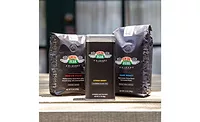2019 State of the Beverage Industry: Ready-to-drink tea, functionality drives demand in market
Kombucha, cannabis infusions serve as growth opportunities for tea category

As one of the world’s oldest beverages, tea is thought to have been first discovered — and used as a medicine for relaxation — in China in the third century. Today, consumers worldwide are enjoying tea hot or iced in familiar flavors like black, white, green and oolong as well as in newer varieties like matcha and sencha.
The number of Americans who drink tea today exceeds 158 million, which is half the U.S. population, stated the Cleveland, Ohio-based Academy of Nutrition and Dietetics in Beverage Industry’s June issue.
“Tea enjoys widespread incidence of use at 90 percent consumer participation,” states Chicago-based Mintel in its September 2018 “Tea and RTD Tea – US” report. “The category offers a variety of product formats and flavors and is suitable for numerous drinking occasions and serving options. This diversity appeals to a wide swath of consumers. Beyond broad appeal, tea also enjoys strong frequency of consumption.”
Driving the category, refrigerated ready-to-drink (RTD) teas generated dollar sales of more than $1.6 billion in U.S. multi-outlets and convenience stores for the 52 weeks ending May 19, a 9.1 percent increase compared with the prior-year period, according to data from Chicago-based Information Resources Inc. (IRI).
(Individual brands)
| DOLLAR SALES | % CHANGE VS. PRIOR YEAR | MARKET SHARE | % CHANGE VS. PRIOR YEAR | |
| Private label | $258,662,857 | 3.1 | 16.0 | -0.9 |
| Gold Peak | $205,702,148 | -2.1 | 12.7 | -1.5 |
| Milos | $164,029,105 | 22.5 | 10.1 | 1.1 |
| GTS Kombucha Synergy | $153,169,237 | -3.4 | 9.5 | -1.2 |
| Red Diamond | $133,784,397 | -0.3 | 8.3 | -0.8 |
| Category Total* | $1,617,531,055 | 9.1 | 100.0 | — |
*Includes brands not listed.
Source: Information Resources Inc. (IRI), Chicago. Total U.S. supermarkets, drug stores, gas and convenience stores, mass merchandisers, military commissaries, and select club and dollar retail chains for the 52 weeks ending May 19.
Data from Rockville, Md.-based Packaged Facts’ “U.S. Beverage Market Outlook 2019” also reflects the mainstream popularity of tea. “Packaged Facts estimated that total retail dollar sales of the U.S. tea and RTD tea category market at $8.3 billion in 2018, with sales increasing at a compound annual growth rate (CAGR) of 3.8 percent since 2013,” it notes.
“Overall growth of tea has been driven by convenient RTD teas, particularly refrigerated varieties (including kombucha), that have a more healthy aura than shelf-stable products,” it continues. “Tea has also benefited from consumers’ ongoing recognition of its healthy properties, especially compared to sugary carbonated beverages.”
In Beverage Industry’s June issue, Anna Amir, lead industry analyst at Los Angeles-based IBISWorld, noted that both tea and RTD tea have benefited from a growing emphasis on healthy living, shifting consumer dietary patterns toward healthier beverages, like tea, she said.
Additionally, bagged/loose-leaf tea have benefited from a prosperous economy enabling consumers to trade up to more premium and higher price-point varieties, particularly impacting RTD beverages as consumers are more likely to purchase new beverages or new varieties as per capita disposable income increases, Amir added.
(Individual brands)
| DOLLAR SALES | % CHANGE VS. PRIOR YEAR | MARKET SHARE | % CHANGE VS. PRIOR YEAR | |
| Lipton Pure Leaf | $720,042,601 | 2.0 | 18.1 | 0.3 |
| AriZona | $567,436,066 | -0.1 | 14.3 | 0.0 |
| Gold Peak | $403,345,305 | 2.3 | 10.1 | 0.2 |
| Lipton Brisk | $365,592,742 | -0.1 | 9.2 | -0.1 |
| Monster Rehab | $288,369,565 | -3.1 | 7.3 | -0.2 |
| Category Total* | $3,976,417,503 | 0.0 | 100.0 | — |
*Includes brands not listed.
Source: Information Resources Inc. (IRI), Chicago. Total U.S. supermarkets, drug stores, gas and convenience stores, mass merchandisers, military commissaries, and select club and dollar retail chains for the 52 weeks ending May 19.
When it comes to “functional-tea,” Packaged Facts’ report also pinpointed loose-leaf and RTD teas as segments benefiting from this trend. “While functionality abounds when it comes to loose-leaf teas on the market, the same now can be said for the RTD category,” the report states. “… Green tea itself is considered by many as a superfood, as research shows it can improve brain function, prevent cancer and even aid in weight loss. Green tea has progressed into the mainstream and can be found in numerous popular RTD teas, like Snapple and Pure Leaf.”
(Individual brands)
| DOLLAR SALES | % CHANGE VS. PRIOR YEAR | MARKET SHARE | % CHANGE VS. PRIOR YEAR | |
| Lipton | $215,721,746 | -5.2 | 18.0 | -1.1 |
| Bigelow | $172,846,416 | 6.3 | 14.4 | 0.7 |
| Private label | $95,257,382 | 5.8 | 7.9 | 0.4 |
| Celestial Seasonings | $84,842,906 | 0.5 | 7.1 | 0.0 |
| Twinings of London | $79,094,405 | 0.6 | 6.6 | 0.0 |
| Category total* | $1,199,189,604 | 0.8 | 100.0 | — |
*Includes brands not listed.
Source: Information Resources Inc. (IRI), Chicago. Total U.S. supermarkets, drug stores, gas and convenience stores, mass merchandisers, military commissaries, and select club and dollar retail chains for the 52 weeks ending May 19.
With a large, stable base of tea drinkers, Mintel’s September 2018 report predicts a bright future for the tea category. The category also will be aided by the exploration of cannabis-infused teas, the rise of refrigerated kombucha teas and sparkling teas, it states.
However, during the next five years to 2024, IBISWorld expects the industry to consolidate due to increased merger and acquisition activity, Amir explained in Beverage Industry’s June issue. “Existing operators will need to continue to adapt to changing health food trends and continue to develop premium [versions] of existing tea varieties,” she said.
Nonetheless, to better position themselves in the market, Amir advises tea and RTD producers to find new ways of distinguishing their brands from the competition, whether it be through advertising, flavors or entirely new products. BI
Looking for a reprint of this article?
From high-res PDFs to custom plaques, order your copy today!






